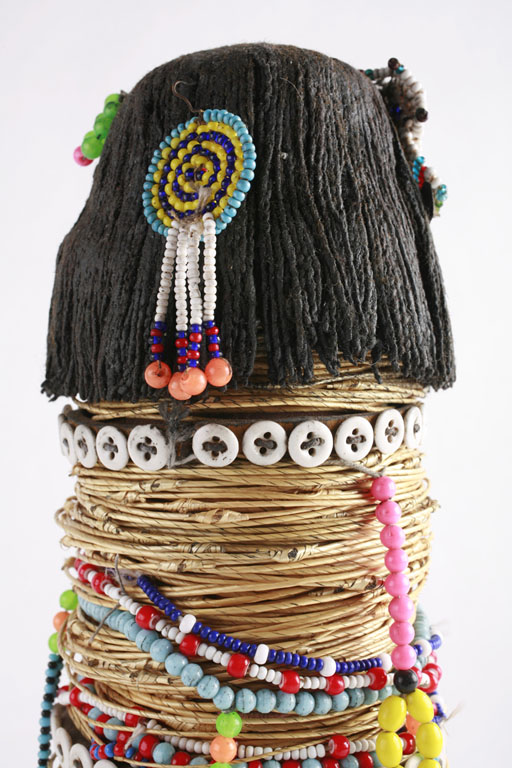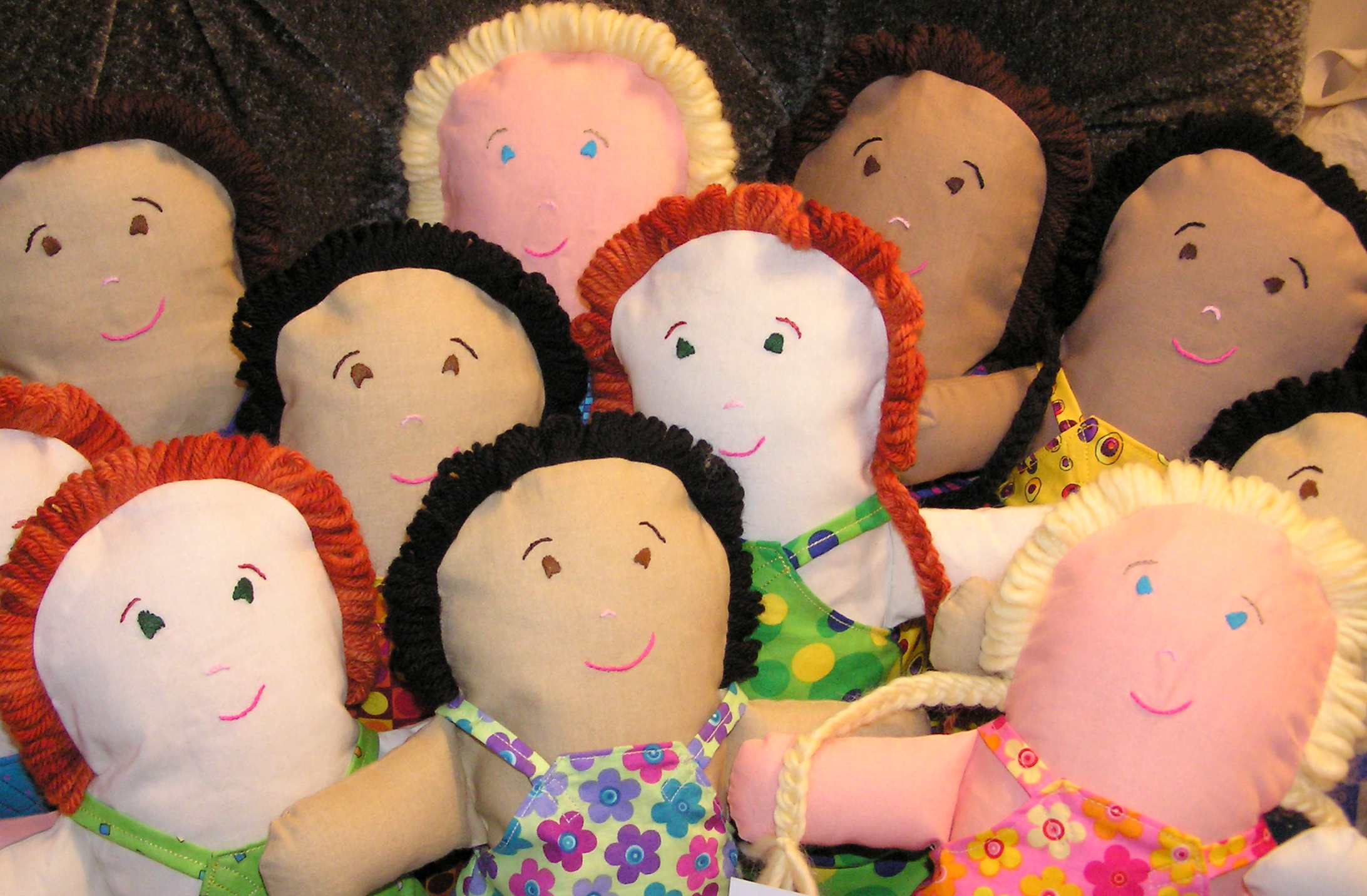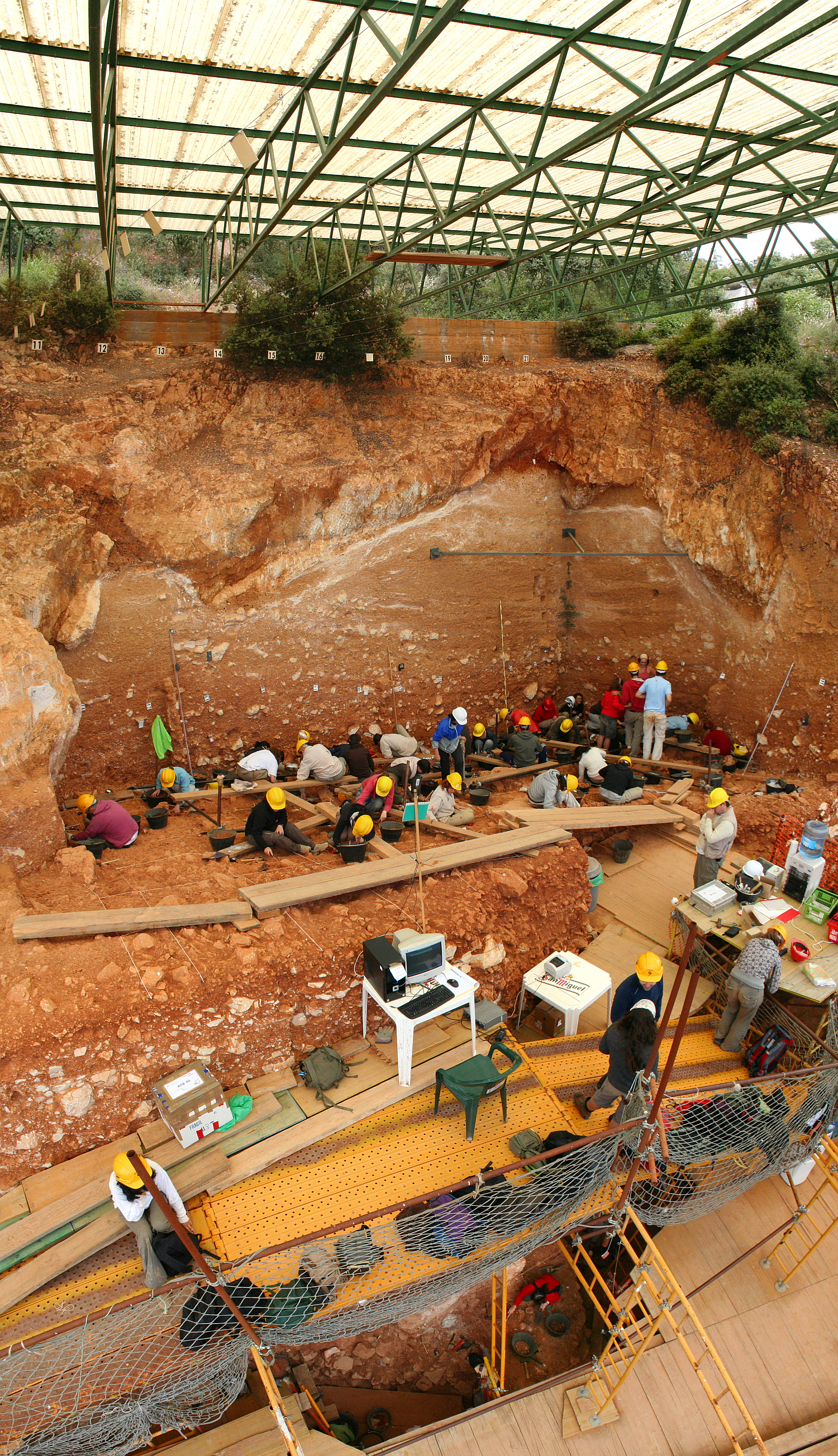|
Dolls
A doll is a physical model, model typically of a human or humanoid character, often used as a toy for children. Dolls have also been used in traditional religious rituals throughout the world. Traditional dolls made of materials such as clay and wood are found in the Americas, Asia, Africa and Europe. The earliest documented dolls go back to the ancient civilizations of Ancient Egypt, Egypt, Ancient Greece, Greece, and Ancient Rome, Rome. They have been made as crude, rudimentary playthings as well as elaborate art. Modern doll manufacturing has its roots in Germany, from the 15th century. With Industrialisation, industrialization and new materials such as porcelain and plastic, dolls were increasingly mass-produced. During the 20th century, dolls became increasingly popular as collectibles. History, types and materials Early history and traditional dolls The earliest dolls were made from available materials such as clay, stone, wood, bone, ivory, leather, or wax. Archaeology ... [...More Info...] [...Related Items...] OR: [Wikipedia] [Google] [Baidu] |
Bisque Doll
A bisque doll or porcelain doll is a doll made partially or wholly out of bisque or biscuit porcelain. Bisque dolls are characterized by their realistic, skin-like Gloss (material appearance), matte finish. They had their peak of popularity between 1860 and 1900 with French and German dolls. Bisque dolls are collectible, and antique dolls can be worth thousands of dollars. Antique German and French bisque dolls from the 19th century were often made as children's playthings, but contemporary bisque dolls are predominantly made directly for the collectors market. Colloquially the terms ''porcelain doll'', ''bisque doll'' and ''china doll'' are sometimes used interchangeably. But collectors, when referring to antique dolls, make a distinction between china dolls, made of Ceramic glaze, glazed porcelain, and bisque dolls, made of unglazed porcelain. When referring to contemporary dolls, the terms ''porcelain'' and ''bisque'' are sometimes used interchangeably. Bisque dolls Most bis ... [...More Info...] [...Related Items...] OR: [Wikipedia] [Google] [Baidu] |
Japanese Dolls
are one of the traditional Japanese crafts. There are various types of traditional dolls, some representing children and babies, some the imperial court, warriors and heroes, fairy-tale characters, gods and (rarely) demons, and also people of the daily life of Japanese cities. Many have a long tradition and are still made today for household shrines, formal gift-giving, or for festival celebrations such as , the doll festival, or , Children's Day. Some are manufactured as a local craft, to be purchased by pilgrims as a souvenir of a temple visit or some other trip. History There may be a continuity in the making of the , humanoid figures, by the ancient Jōmon period, Jōmon culture in Japan (8000–200 BC), which were associated with fertility or shamanism, shamanistic rites, at a time when dolls were thought to have souls. Dolls also have continuity from the funerary figures of the subsequent Kofun period, Kofun culture (around 300–600 AD). Expert Alan Pate notes that te ... [...More Info...] [...Related Items...] OR: [Wikipedia] [Google] [Baidu] |
African Dolls
African dolls across the continent are created for young girls to play with and as a charm to ensure fertility in women. Their shape and costume vary according to region and custom. Frequently dolls are handed down from mother to daughter. Western dolls are popular in Africa and are often dressed with traditional garb. When the doll concept is considered in the context of African culture, they are usually not children's playthings, but rather objects that are laden with ritual and religious associations within the community. African dolls are used to teach, and entertain. They are supernatural intermediaries and they are manipulated for ritual purposes. Each of these dolls is unique because they are handmade and are traditionally handed down through generations. Ndebele dolls Linga Koba dolls are from the Ndebele people in Southern Africa. One of the smallest tribes of the region, the Ndebele are noted for their painted homes of brilliant colors that stand out in the drab countr ... [...More Info...] [...Related Items...] OR: [Wikipedia] [Google] [Baidu] |
Rag Doll
A rag doll is a doll made from scraps of fabric. They are one of the oldest children's toys in existence. Today, many rag dolls are commercially produced to mimic aspects of the original home-made dolls, such as simple features, soft cloth bodies, and patchwork clothing. History Traditionally home-made from (and stuffed with) spare scraps of material, they are one of the oldest children's toys in existence. The British Museum has a Roman rag doll, found in a child's grave dating from the 1st to 5th century AD. Historically, rag dolls have been used as comfort objects, and to teach young children nurturing skills. They were often used to teach children how to sew, as the children could practice sewing clothes for the doll and make some simple dolls themselves.Reef, Catherine. “Childhood in the United States, 1790–1850.” ''Childhood in America'', Facts On File, 2002. ''American History Online''. Accessed 1 Dec. 2018. In America, from the colonial era up to the early 20th ce ... [...More Info...] [...Related Items...] OR: [Wikipedia] [Google] [Baidu] |
Paddle Doll
Paddle dolls are a type of ancient Egyptian female figurine that have been excavated from various tombs. Paddle dolls have been found in burials from the late Sixth Dynasty to the Thirteenth Dynasty from tombs in Asasif, Beni Hassan, Naga el-Deir, Rifeh, Sheikh Farag and Thebes. The period of their greatest popularity seems to have been the late Eleventh and early Twelfth Dynasties. Form Paddle dolls are made of thin pieces of wood which depict the torso of a woman with truncated arms and no legs. Thick "hair" is represented by small beads strung along string, which are often made from black mud. The necks often are adorned with collars, and the torso with a patterned textile or other jewellery. The breasts and pubic triangle are painted on and Morris notes that "extraordinary prominence given to the pubic triangle" and "pubic triangles are the one constant in the iconic repertoire of the paddle dolls." They will often also have tattoos in diamond shapes, and in the forms ... [...More Info...] [...Related Items...] OR: [Wikipedia] [Google] [Baidu] |
Human
Humans (''Homo sapiens'') or modern humans are the most common and widespread species of primate, and the last surviving species of the genus ''Homo''. They are Hominidae, great apes characterized by their Prehistory of nakedness and clothing#Evolution of hairlessness, hairlessness, bipedality, bipedalism, and high Human intelligence, intelligence. Humans have large Human brain, brains, enabling more advanced cognitive skills that facilitate successful adaptation to varied environments, development of sophisticated tools, and formation of complex social structures and civilizations. Humans are Sociality, highly social, with individual humans tending to belong to a Level of analysis, multi-layered network of distinct social groups — from families and peer groups to corporations and State (polity), political states. As such, social interactions between humans have established a wide variety of Value theory, values, norm (sociology), social norms, languages, and traditions (co ... [...More Info...] [...Related Items...] OR: [Wikipedia] [Google] [Baidu] |
Archaeology
Archaeology or archeology is the study of human activity through the recovery and analysis of material culture. The archaeological record consists of Artifact (archaeology), artifacts, architecture, biofact (archaeology), biofacts or ecofacts, archaeological site, sites, and cultural landscapes. Archaeology can be considered both a social science and a branch of the humanities. It is usually considered an independent academic discipline, but may also be classified as part of anthropology (in North America – the four-field approach), history or geography. The discipline involves Survey (archaeology), surveying, Archaeological excavation, excavation, and eventually Post excavation, analysis of data collected, to learn more about the past. In broad scope, archaeology relies on cross-disciplinary research. Archaeologists study human prehistory and history, from the development of the first stone tools at Lomekwi in East Africa 3.3 million years ago up until recent decades. A ... [...More Info...] [...Related Items...] OR: [Wikipedia] [Google] [Baidu] |
Ashanti People
The Asante, also known as Ashanti in English (), are part of the Akan people, Akan ethnic group and are native to the Ashanti Region of modern-day Ghana. Asantes are the last group to emerge out of the various Akan civilisations. Twi is spoken by over nine million Asante people as their native language. The Asante people developed the Ashanti Empire, along the Lake Volta and Gulf of Guinea. The empire was founded in 1670, and the capital Kumasi, Kumase was founded in 1680 by Asantehene Osei Kofi Tutu I on the advice of Okomfo Anokye, his premier. Sited at the crossroads of the Trans-Saharan trade, Kumase's strategic location contributed significantly to its growth. Over time a number of peculiar factors have combined to transform the Kumase metropolis into a financial centre and political capital. The main causal factors included the unquestioning loyalty to the List of rulers of Asante, Asante rulers and the Kumase metropolis' growing wealth, derived in part from the capital's lu ... [...More Info...] [...Related Items...] OR: [Wikipedia] [Google] [Baidu] |
Ghana
Ghana, officially the Republic of Ghana, is a country in West Africa. It is situated along the Gulf of Guinea and the Atlantic Ocean to the south, and shares borders with Côte d’Ivoire to the west, Burkina Faso to the north, and Togo to the east. Ghana covers an area of , spanning diverse ecologies, from coastal savannas to tropical rainforests. With nearly 35 million inhabitants, Ghana is the second-most populous country in West Africa. The capital and largest city is Accra; other significant cities include Tema, Kumasi, Sunyani, Ho, Cape Coast, Techiman, Tamale, and Sekondi-Takoradi. The earliest kingdoms to emerge in Ghana were Bonoman in the south and the Kingdom of Dagbon in the north, with Bonoman existing in the area during the 11th century. The Asante Empire and other Akan kingdoms in the south emerged over the centuries. Beginning in the 15th century, the Portuguese Empire, followed by other European powers, contested the area for trading r ... [...More Info...] [...Related Items...] OR: [Wikipedia] [Google] [Baidu] |
Fertility
Fertility in colloquial terms refers the ability to have offspring. In demographic contexts, fertility refers to the actual production of offspring, rather than the physical capability to reproduce, which is termed fecundity. The fertility rate is the average number of children born during an individual's lifetime. In medicine, fertility refers to the ability to have children, and infertility refers to difficulty in reproducing naturally. In general, infertility or subfertility in humans is defined as not being able to conceive a child after one year (or longer) of unprotected sex. The antithesis of ''fertility'' is infertility, while the antithesis of ''fecundity'' is sterility. Demography In demographic contexts, fertility refers to the actual production of offspring, rather than the physical capability to produce which is termed fecundity. While fertility can be measured, fecundity cannot be. Demographers measure the fertility rate in a variety of ways, which can be broa ... [...More Info...] [...Related Items...] OR: [Wikipedia] [Google] [Baidu] |
Akuaba
Akua'ba, also spelled akwaba or akuba, are wooden ritual fertility dolls originating from western Ghana and nearby regions. They are particularly associated with the Fanti people, who are part of the Akan group of ethnicities in Ghana and Ivory Coast. The dolls are characterized by their large, disc-like heads and are used traditionally by young women seeking to conceive a child or to ensure the attractiveness of their future children. When not in use, akua'ba are ritually washed and cared for in the traditional homestead. The treatment of the ''akua'ba'' has been described as an example of traditional beliefs that corresponds to many traditional beliefs in West African sympathetic magic. While the Fanti are best known for their akua'ba, other tribes in the West African region, such as the Kru and Igbo people, have their own distinctive styles of fertility dolls. These dolls are often used in similar ways, reflecting the importance of fertility and children in many West Afr ... [...More Info...] [...Related Items...] OR: [Wikipedia] [Google] [Baidu] |








